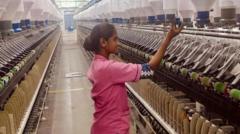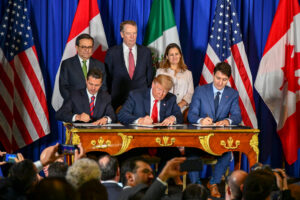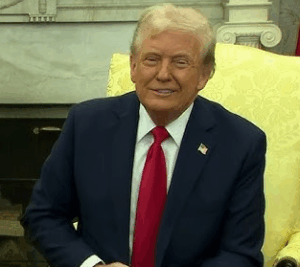India's textile sector is experiencing declining demand due to an influx of cheap Chinese viscose yarn, exacerbated by US tariffs on Chinese goods. Manufacturers are concerned about competitiveness and overall trade balance as imports from China continue to rise, pressing the government to take proactive measures.
India Faces Trade Challenges Amid Chinese 'Dumping' and US Tariff Impacts

India Faces Trade Challenges Amid Chinese 'Dumping' and US Tariff Impacts
Indian manufacturers are grappling with the adverse effects of cheaper Chinese imports and trade tensions with the US as they call for protective measures.
India's textile industry is currently facing tough challenges as it navigates the evolving landscape of global trade dynamics. The difficulties stem largely from the influx of lower-priced Chinese viscose yarn, which has hindered local production significantly. Orders have plummeted nearly 40% in recent weeks, leaving products idle in spinning mills across regions like Tamil Nadu.
Older manufacturers, such as 64-year-old Thirunavkarsu, are particularly feeling the pinch as they struggle to compete with the significantly cheaper prices set by Chinese exporters. With Chinese viscose yarn being sold at 15 rupees ($0.18) less per kilo, Indian manufacturers argue that the surge in imports is effectively being facilitated by ongoing trade tensions between the US and China. These tensions have led to Chinese manufacturers seeking alternative markets for their goods as American tariffs soar, reaching as high as 145%.
Jagadesh Chandran from the South India Spinners Association highlighted concerns that the competition posed by Chinese products could lead to further production slowdowns in local factories, which could compel many small mills to reduce operations severely.
While the Chinese Ambassador to India, Xu Feihong, has assured that China will avoid market 'dumping' and is keen to enhance purchases of Indian goods, worries have spread beyond textiles. India's dependency on cheaper Chinese imports stretches across various sectors, exacerbated by increasing trade deficits that now reach $100 billion.
As the influx of Chinese goods rises—bolstered by a noticeable spike in electronic imports—India's trade ministry has established a committee to monitor these developments. Moreover, the government recently imposed a 12% safeguard duty on certain steel imports from China to mitigate the negative impact of such cheap influxes on local industries.
Despite these strategic protective measures and initiatives aimed at bolstering domestic manufacturing capabilities, experts warn that India's reliance on Chinese goods presents a structural problem. The country’s exports to China have fallen below levels observed in 2014, raising alarms about the health of Indian manufacturing.
With entities like the World Trade Organization reporting a record number of complaints filed against China for unfair trade practices, the pressure is increasingly mounting on India to assert its concerns at international forums, reflecting similar sentiments echoed by Western nations. Economists argue that while opportunities exist due to the shifting trade dynamics resulting from US-China tensions, India must leverage this situation to decrease its dependence and bolster local competitiveness effectively.
The challenges faced by Indian textile makers serve as a microcosm of larger trade intricacies that define its relationship with China, with the ongoing narrative around 'dumping' and trade imbalances underscoring the complexities involved in global trade today.






















